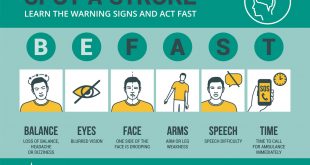High blood sugar and cardiovascular disease have more in common than most people realize. In our country nearly 30 million people have diabetes, and a vast majority of our population unknowingly has what’s known as prediabetes, which can quickly escalate into the disease within a short amount of time.
High Blood Sugar and PVD
High blood glucose and damage to blood vessels are very closely associated due to several risk factors. Metabolic syndrome is a condition in which the high insulin and leptin levels are resistant, causing high blood pressure, high cholesterol, high triglycerides, and visceral fat to become significant risk factors for heart disease and coronary disorders such as peripheral vascular disease (PVD).
In recent years, metabolic syndrome has become a commonly identified risk factor for cardiovascular disease because a vast number of Americans are overweight, and their bodies are inflamed; this inflammatory response affects their vascular structures. The other primary condition associated with diabetic PVD is atherosclerosis. When the vessels are circulating high-glucose blood, atherosclerosis occurs at a greater intensity and frequency. Atherosclerosis is a build-up of plaque and causes a hardening of the arteries.
Atherosclerosis
Several substances such as cholesterol, fatty materials, fibrin (blood clotting substance) make up what’s known as plaque. Plaque poses a huge risk due to its narrowing and blockage of arteries, vessels and even small ‘microvessels’ throughout the body.
Individuals with peripheral vascular disease (PVD) have blood flow disruptions usually in the feet and legs, but it can also occur in the brain, arms, and heart.
Various forms of venous issues affect 25 million Americans. Many of these individuals have diabetes, and their condition can be complicated as a result. Their legs are swollen, achy and they have a heavy sensation. When our veins are working correctly, they pump blood back to the heart. Valves in the veins are made to open and close in one direction. If these valves or the wall of the veins are damaged, the blood settles with gravity, and the result is a pooling of the blood in our legs. This pooling is called stasis, and can present a risk to your health.
PVD Risk Factors
• Older than 50 years of age
• Diabetes
• Family history
• Heart disease
• High blood cholesterol
• High blood pressure
• Hormonal imbalance
• Overweight
• Sedentary Lifestyle
• Smoking
PVD and cardiovascular issues must be monitored and sometimes treated to prevent further damage to your circulatory system and your overall health.
PVD Symptoms
• Claudication (leg and calf pain while walking)
• Weak pulse in the ankle or foot
• Hair loss on legs and feet
• Leg pain while standing or sitting, which subsides after resting for an extended period of time
• A sensation of tightness & burning may occur in the leg or foot
• Swelling of the calves, which improves after elevation
• Dark veins
• Dry, itchy skin
• Ulcers can occur near the ankle and are often painless, but may have a dark rim
• Shortness of breath
PVD Treatment
The treatment for PVD depends on your overall health, your severity of the disease and underlying medical conditions. These methods of treatment can range from noninvasive management such as diet and exercise protocols and certain medications, to procedures such as minimally invasive interventions like angioplasty, stents or more involved surgical vascular reconstructions. If PVD is left untreated, there can be significant risks, such as: limb loss, heart attack, or stroke.
the veins are damaged, the blood settles with gravity, and the result is a pooling of the blood in our legs. This pooling is called stasis, and can present a risk to your health.
PVD Risk Factors
• Older than 50 years of age
• Diabetes
• Family history
• Heart disease
• High blood cholesterol
• High blood pressure
• Hormonal imbalance
• Overweight
• Sedentary Lifestyle
• Smoking
PVD and cardiovascular issues must be monitored and sometimes treated to prevent further damage to your circulatory system and your overall health.
PVD Symptoms
• Claudication (leg and calf pain while walking)
• Weak pulse in the ankle or foot
• Hair loss on legs and feet
• Leg pain while standing or sitting, which subsides after resting for an extended period of time
• A sensation of tightness & burning may occur in the leg or foot
• Swelling of the calves, which improves after elevation
• Dark veins
• Dry, itchy skin
• Ulcers can occur near the ankle and are often painless, but may have a dark rim
• Shortness of breath
PVD Treatment
The treatment for PVD depends on your overall health, your severity of the disease and underlying medical conditions. These methods of treatment can range from noninvasive management such as diet and exercise protocols and certain medications, to procedures such as minimally invasive interventions like angioplasty, stents or more involved surgical vascular reconstructions. If PVD is left untreated, there can be significant risks, such as: limb loss, heart attack, or stroke.
Sarasota Vascular Specialists
941-371-6565
www.veinsandarteries.com
Sarasota
600 N. Cattlemen Road, Sarasota, Florida 34232
 Southwest Florida's Health and Wellness Magazine Health and Wellness Articles
Southwest Florida's Health and Wellness Magazine Health and Wellness Articles

